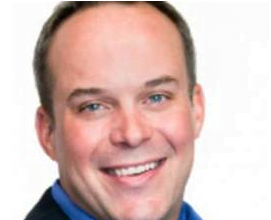In the last month, the Obama administration announced programs to reduce racial disparities and increase prevention in health care. Neither program was funded with actual money, so they are about political showmanship as much as any real desire to tackle the worthy causes. After all, who would oppose such programs?
In the last month, the Obama administration announced programs to reduce racial disparities and increase prevention in health care. Neither program was funded with actual money, so they are about political showmanship as much as any real desire to tackle the worthy causes. After all, who would oppose such programs? I half-expect the administration to follow-up these announcements with one focusing on moms and apple pie.
But have a closer look at what Iowa Democrat Tom Harkin said at the press conference introducing the latter initiative. “For every dollar we invest in prevention, we save $6. We need to provide an approach that makes it easier to be healthy and harder to be unhealthy.”
I haven’t found the report on which Harkin bases his assertion about the returns on health prevention efforts, but my sense is its more complicated than Harkin would have us believe. Some screening and prevention programs are not effective at all. Others are effective, but prohibitively expensive. Any national program to improve prevention needs to evaluate each potential component to assure it reflects Harkin’s focus on cost-effectiveness.
Many recently proposed screening programs do not meet this criterion, in fact. Let’s take a look at a few of them.
Screening for Prostate Cancer
Two months ago, scientists reported the results of a 20-year follow-up study of 1,500 Swedish men between the ages of 50-69. The study found that routine screening for prostate cancer did more harm than good. The screening program (which included digital rectal exams and prostate-specific antigen tests) enabled physicians to detect and treat nearly a third more cancers, but there were problems with overtreatment and treatment related side-effects. More importantly, prostate cancer death rates were the same in the screening group as they were in the control group.
Those findings were consistent with an earlier meta-analysis of prostate cancer screening programs involving nearly 400,000 men. In that analysis, men who were screened were diagnosed with the disease 46% more frequently, but the marginal increase was limited to early-stage forms of the disease. And here again, there was no survival benefit.
Spiral CT Screening for Lung Cancer
Last fall, a much heralded trial showed that screening spiral CT scans reduced lung cancer deaths by 20% in current and former heavy smokers. However, the absolute cancer death percentages in the study were low: 1.3% for subjects receiving the CT scan and 1.7% in those receiving chest x-rays. The absolute difference in death rates was therefore about 4 in a thousand, and the direct cost per life saved was ridiculously high: $180,000.
That’s not counting the indirect costs. Fully 25% of the subjects who received the CT scan had a false positive result, many of which triggered additional scans, lung biopsies and even thoracic surgery. Spiral CT scans can cost up to $1,000. A screening program using this technology would cost many tens of billions of dollars per year.
Overuse of Colonoscopies
In this instance, the issue wasn’t the initial colonoscopy, but unnecessary repetitions of the screening procedure in patients in which the initial test was negative. Scientists from the University of Texas found that that 46% of Medicare enrollees that had negative colonoscopy findings from 2001 through 2003 underwent another colonoscopy within 7 years. Even in patients who were at least 80 years old (and who were thus more likely to die of something other than colon cancer), repeat exams within 7 years were done on 33%. Interestingly, although Medicare supposedly prohibits reimbursement for screening colonoscopy within 10 years of a negative exam, it denied only 2% of the claims for the repeat procedures.
ECG Screening for High School Students
The American Heart Association recommends that high school athletes undergo pre-participation screening, including a physical exam and a family and personal medical history, but not an ECG. However, in the wake of the tragic death of a star basketball player, scientists in the Chicago area undertook a program to screen all 50,000 students with ECGs, as well.
They found previously unrecognized ECG abnormalities in 2.16% of the students, although the vast majority of them were trivial (left atrial enlargement, for example). A parallel analysis revealed that 1,500 students with false positive tests would be referred for further testing for every life saved. Nearly all of the editorials accompanying the report of the Chicago program suggested that this “collateral damage” was unacceptably high.
What Can We Make of This?
The Obama administration’s new (albeit non-funded) emphasis on screening and prevention isn’t just about political theater. Of course a program like this can save lives and money! But administrators of such a program have to do the spade work on each and every component of such an initiative. In all likelihood, none of the procedures mentioned above would make the cut for such a program.
With prevention and screening, it’s essential to separate the wheat from the chaff.









